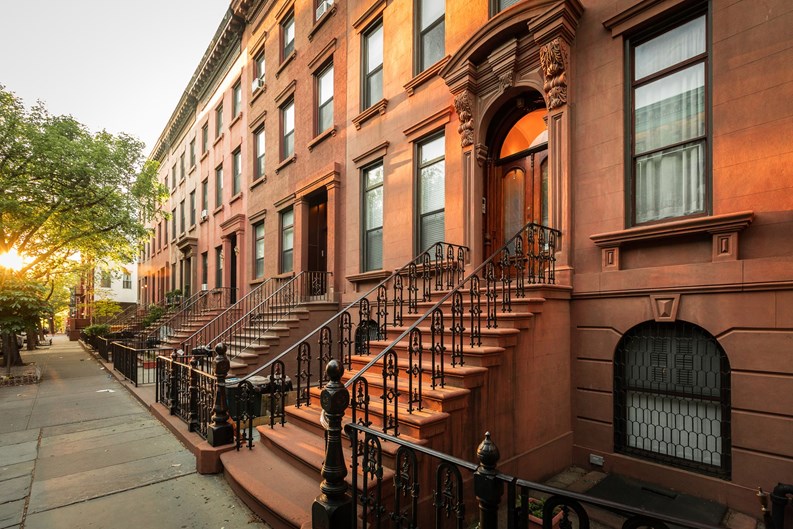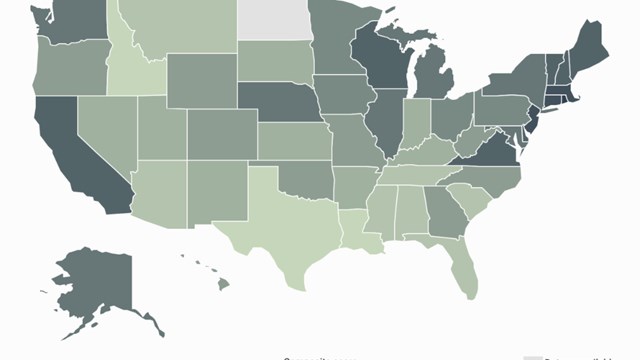Brooklyn’s residential co-op and condominium market ended last year positively, sustaining the market’s expansion, although with a slowdown in closed transactions, according to Corcoran’s recent 4Q 2017 report.
“Closed sales...took a break from the double-digit surge seen earlier this year [2017],” said the study, adding the fourth quarter was up 7 percent over the same quarter the previous year.
The median price for Brooklyn condo resales during fourth quarter 2017 increased 9 percent over fourth quarter 2016 from $800,000 to $870,000, according to the report. During that period, the median price per square foot year-over-year rose 11 percent from $881 per square foot to $982 per square foot. Meanwhile, the average Brooklyn condo price was $993,000 in fourth quarter 2017, a 12 percent jump from the same period in 2016.
The median price for Brooklyn co-op resales in fourth quarter 2017 showed different results. A negative change in median price per square foot of 7 percent over fourth quarter 2016 was indicated, although the median price for co-op resales was $455,000, representing an 18 percent jump year-over-year. The report also indicated that the average price for co-op resales was $573,000, a gain of 15 percent from the same period a year ago. The decline in price per square foot reflects a continuing decline in prices for larger units. Fourth quarter 2017 was “the fifth consecutive quarter of annual price per square foot declines” in all bedroom types except studios.
Beth Kugel, a broker with the Brooklyn office of real estate firm Halstead, says, “This past year in Brooklyn we have continued to see very tight inventory in most neighborhoods, with lots of growth in Central Brooklyn and ‘Brownstone’ Brooklyn. Essentially, there were no declining markets in Brooklyn. We have seen growth year after year.”
Perhaps the most significant changes in the market are in inventory and months-of-supply. Marketwide, the overall number of units available decreased by a whopping 26 percent since fourth quarter 2016. “The last time buyers had fewer options,” Corcoran’s report stated, “was the trough of inventory during fourth quarter of 2013.”
Months-of-supply, the measure of how many months it would take for the current supply of units on the market to sell, is considered a good indicator of whether a market is favoring buyers or sellers. Decreases in this measurement clearly indicate a trend toward a seller’s market. That observation can be skewed though by sudden or steady decreases in inventory, such as those observed in the current Brooklyn market. This measure decreased 38 percent in fourth quarter 2017 compared to the same period in 2016.
Overall, while closed sales increased 7 percent to 1,318 year-over-year, they declined 22 percent from third quarter 2017, a possible “canary in the mineshaft” for 2018. This decline may be related to uncertainty over the new tax bill passed by Congress and signed into law by President Trump before Christmas. The law severely restricts the deductibility of state and local real estate and income taxes from federal tax calculations going forward. That provision is seen by many as a possible “dampener” on prices in tax heavy states and cities, such as New York.
“The new tax law applies strongly to the local markets,” says Simon Seaton, an agent also with Halstead, “ and will play a larger role in buyer decisions. Its ultimate effect still remains to be seen.”
From a neighborhood perspective comparisons are all over the board. Bedford Stuyvesant/Crown heights/Lefferts Gardens/Bushwick had the largest decrease in sales but tied for the highest increase in median price with Fort Greene/Clinton Hill/Prospect Heights. Fort Greene/Clinton Hill/Prospect Heights also had the largest increase in average price per square foot overall. Brooklyn Heights/Cobble Hill/Dumbo/Downtown had the sharpest drop in average price per square foot. Carroll Gardens/Boerum Hill/Red Hook showed the greatest gain in closed sales and steepest decline in current inventory.
For the luxury market in last year’s fourth quarter, the median price was $1.775M, a 26 percent decline compared to the same period in 2016. “Since the beginning of the year, the entry point into the luxury market has been slipping,” said Corcoran’s report, “a significant drop in the number of sales over $3 million drove both the threshold and overall prices lower. Fewer sales in neighborhoods such as Dumbo and Brooklyn Heights depressed pricing in the luxury market. Additionally, new development sales did not claim the majority of market share this quarter as it did a year ago.”
Overall, the question in both the Brooklyn and Manhattan markets is whether the declines seen in the past quarter are a blip or the beginning of a trend. The bigger question is whether that trend will be exacerbated by the uncertainty posed by the new tax legislation.
Next week, we will take a look at what’s in store for 2018.
AJ Sidransky is a staff writer at The Cooperator and a published novelist.







Comments
Leave a Comment